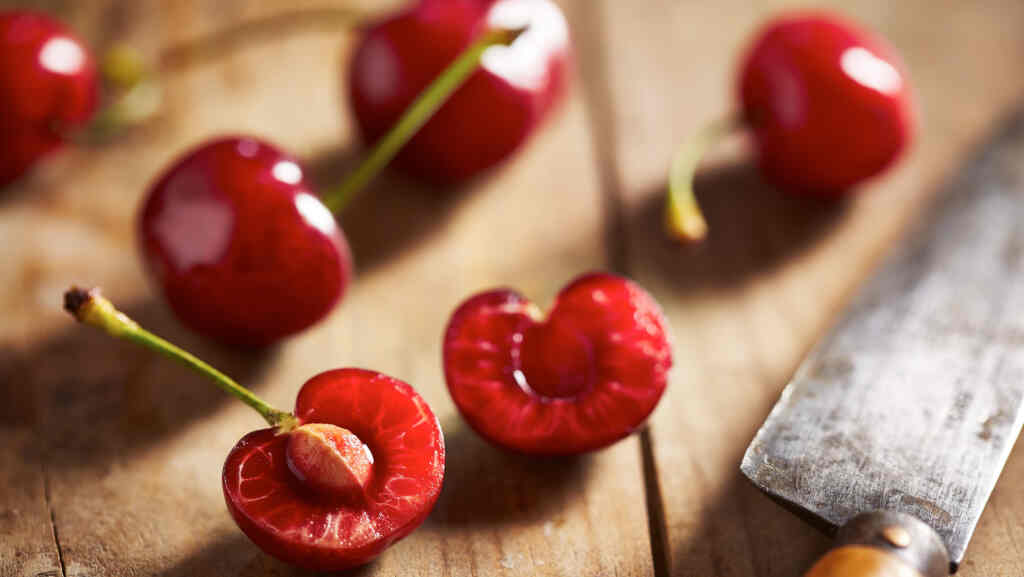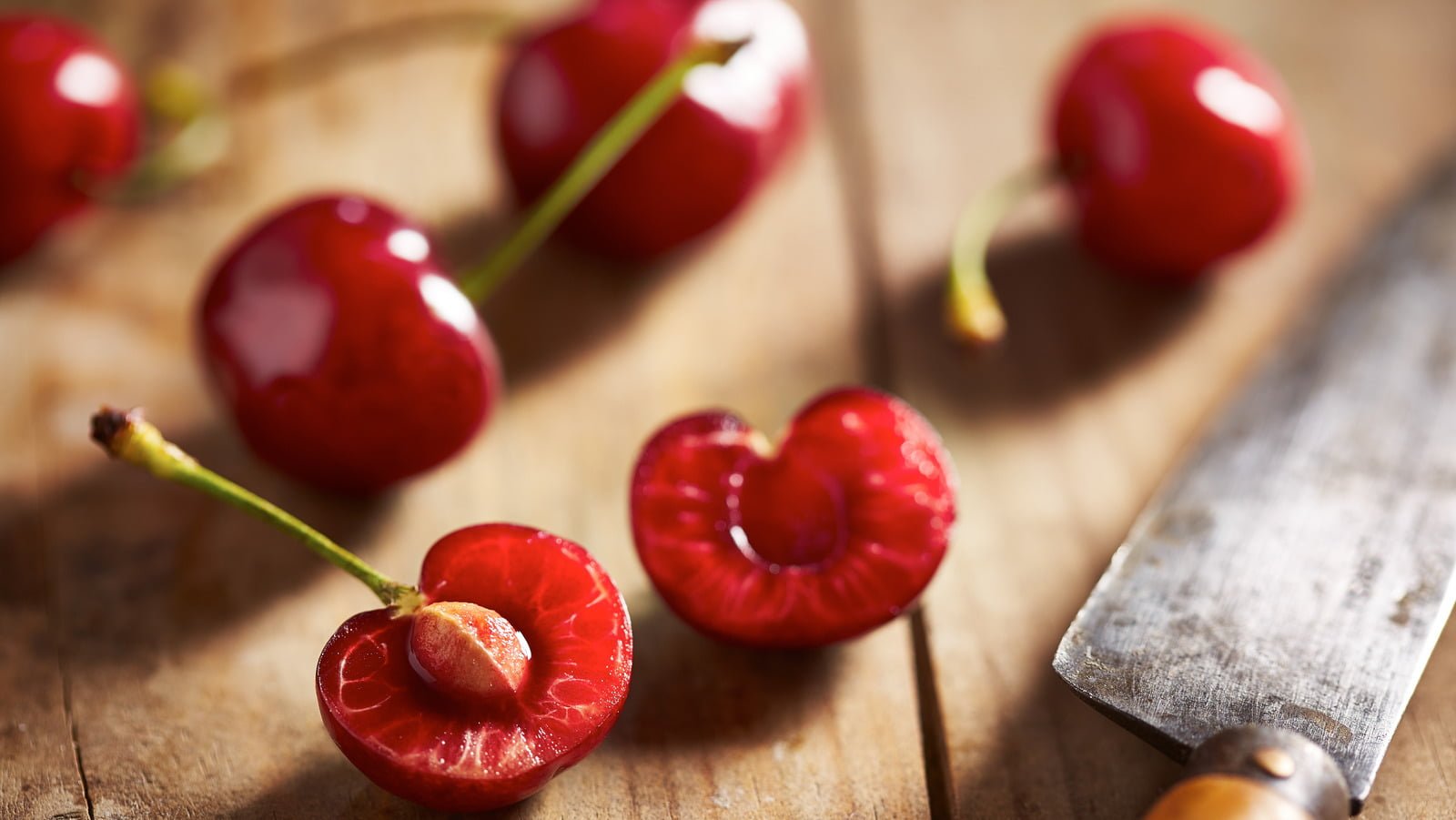Can we eat cherry pits? Cherries, with their vibrant colors and sweet flavors, are a beloved fruit enjoyed in various culinary creations. However, as you savor the delicious flesh of cherries, you might wonder about their pits – those hard, inner seeds that are an inherent part of the fruit. Can you eat cherry pits, or should they be avoided?
In this exploration of cherry pits and their edibility, we’ll delve into the composition of these seeds, examine the potential health risks, uncover historical and cultural uses, and discuss whether there are edible varieties of cherry pits. Join us on this journey to discover the truth about whether cherry pits have a place on your plate.
The Composition of Cherry Pits
Cherry pits, also known as cherry stones or seeds, are the hard, central parts of cherries that encase the kernel or seed within. Understanding the composition of cherry pits is essential to determine whether they are edible or pose any risks.
- Hard Shell: Cherry pits have a tough, outer shell that protects the inner kernel. This shell is composed primarily of lignin, cellulose, and hemicellulose, making it resistant to physical damage.
- Kernel: Inside the hard shell of a cherry pit lies the kernel, which contains the seed of the cherry tree. The kernel is the part of the pit that, if consumed, is of concern due to its potential cyanide content.
- Cyanogenic Glycosides: The kernel of cherry pits contains compounds called cyanogenic glycosides, such as amygdalin. When these compounds come into contact with enzymes in the digestive system, they can release cyanide. Cyanide is a toxic substance that, in high enough quantities, can be harmful or even fatal to humans.
- Surrounding Fruit Flesh: Cherries themselves are a delicious and nutritious fruit with juicy flesh surrounding the pit. The flesh is what most people enjoy when eating cherries.
- Size and Shape: Cherry pits vary in size and shape, depending on the cherry variety. Some pits are relatively small and oval-shaped, while others are larger and more round.
It’s important to note that the hard shell of cherry pits is not typically consumed due to its tough and indigestible nature. The potential edibility or safety of cherry pits primarily concerns the inner kernel and its cyanide content, which we will explore further in the sections on health risks and safety concerns.
Health Risks and Safety Concerns
When it comes to cherry pits, there are notable health risks and safety concerns primarily associated with the cyanide content in the inner kernel. Cyanogenic glycosides, naturally occurring compounds found in the kernel, can release cyanide when ingested. Here’s what you need to know:
- Cyanide Poisoning: Cyanide is a highly toxic chemical that can interfere with the body’s ability to use oxygen, potentially leading to serious health issues or even death in high doses.
- Bitter Almonds and Cherry Kernels: Cherry kernels, like bitter almonds, contain cyanogenic glycosides. Bitter almonds have been used to extract almond oil but are not commonly consumed due to their cyanide content. Similarly, cherry kernels are not typically eaten for the same reason.
- Potential Toxicity: Consumption of even a small number of cherry kernels could potentially lead to cyanide poisoning, especially if they are ingested in a concentrated form, such as by grinding or chewing them.
- Symptoms of Cyanide Poisoning: Symptoms of cyanide poisoning can include nausea, vomiting, headache, dizziness, difficulty breathing, and, in severe cases, convulsions and unconsciousness.
- Variability in Cyanide Content: The cyanide content in cherry kernels can vary depending on the cherry variety and growing conditions. This makes it difficult to determine a safe threshold for consumption.
Cyanide Content in Cherry Pits
The cyanide content in cherry pits is a cause for concern due to the presence of cyanogenic glycosides, particularly amygdalin, which is naturally occurring in these seeds. When cherry pits are crushed, chewed, or otherwise disrupted during consumption, these compounds can come into contact with enzymes in the digestive system, leading to the release of cyanide. Cyanide is a highly toxic substance that interferes with the body’s ability to use oxygen, potentially causing serious health problems or even death in sufficient quantities.
The extent of cyanide content in cherry pits can vary depending on factors such as the cherry variety and growing conditions, making it challenging to establish a safe threshold for consumption. Consequently, it is strongly advised not to eat cherry pits or attempt to extract their inner kernels. This precaution is particularly important for vulnerable populations, such as children, pregnant individuals, and those with pre-existing health conditions. While cherries themselves are a delightful and safe fruit to enjoy, the pits should be discarded to prevent any potential risks associated with cyanide exposure.

Historical and Cultural Uses of Cherry Pits
Throughout history and across various cultures, cherry pits have found unique and creative applications beyond their role as the seeds within cherries. While their edibility is generally discouraged due to cyanide concerns, cherry pits have been repurposed in intriguing ways:
- Medicinal Uses: In some cultures, ground cherry pits were used in traditional medicine for their supposed therapeutic properties. They were believed to alleviate symptoms of digestive issues, as well as serve as a mild sedative or cough remedy. However, such practices are considered outdated and potentially unsafe in light of modern medical knowledge.
- Heating Pads: Cherry pits have been used as a filling for heating pads or sachets. When heated, the pits retain warmth and can provide relief for minor aches and pains. These cherry pit-filled pads have been popular in some European countries.
- Arts and Crafts: Cherry pits have been employed in arts and crafts projects. They can be used as small beads, buttons, or even as game pieces in traditional board games. The lightweight nature of dried cherry pits makes them suitable for these creative endeavors.
- Distillation: In the past, cherry pits were sometimes used in distillation processes for making flavored spirits or liqueurs. They were chosen for their almond-like aroma, which could be imparted to the final product. However, modern distillation practices have largely replaced this method with safer alternatives.
- Gardening: Some gardeners have experimented with crushed cherry pits as a natural mulch or soil conditioner. The pits can contribute organic matter to the soil as they decompose, enhancing its structure.
Are There Edible Varieties of Cherry Pits?
No, there are no known varieties of cherry pits that are considered edible. Cherry pits, regardless of the cherry variety they come from, contain cyanogenic glycosides, such as amygdalin, which can release cyanide when ingested. Cyanide is a highly toxic compound that can pose serious health risks, even in small quantities.
While some cherry pits may be larger or smaller, rounder or more elongated, the presence of cyanogenic glycosides is a common characteristic across all cherry pit varieties. Consequently, it is strongly discouraged to consume cherry pits or their inner kernels.
When enjoying cherries, it’s important to savor the sweet and juicy fruit flesh while discarding the pits. The flesh of cherries is delicious and safe to eat, but the same cannot be said for the pits, which should be handled with care and disposed of to prevent any potential health risks associated with cyanide exposure.
Culinary Uses of Cherry Pits
While the pits of cherries themselves are not typically consumed due to safety concerns related to cyanide content, they have found some culinary uses in the past and present, albeit indirectly. Here are a few culinary applications of cherry pits:
- Flavoring Liquor: In some traditional recipes for cherry pit liqueurs or spirits, such as “kirsch” in Europe, cherry pits were used to impart a subtle almond-like flavor to the beverage. The pits were steeped in alcohol, allowing their essence to infuse the liquor with a unique taste.
- Cherry Pit Syrup: Cherry pits have been used to create a cherry pit syrup. This syrup was made by simmering crushed cherry pits with sugar and water, resulting in a subtly flavored syrup that could be used as a drizzle over desserts or a sweetener for cocktails.
- Almond Extract Substitute: In the absence of almond extract, some old recipes suggested using ground cherry pits as a substitute due to their almond-like aroma. However, modern almond extract is a safer and more reliable choice.
It’s important to note that while these culinary uses exist, they are relatively uncommon today, and using cherry pits in cooking or baking is not recommended due to the potential health risks associated with cyanide exposure. Modern alternatives, such as almond extract, offer safer and more controlled ways to achieve desired flavors in recipes without any health concerns.
Alternative Uses for Cherry Pits
Cherry pits, although not typically consumed due to cyanide concerns, can be repurposed in various creative and practical ways. Here are some alternative uses for cherry pits:
- Heating Pads: Cherry pits, when dried and placed in a fabric pouch, make excellent natural heating pads. They can be heated in the microwave and used to relieve minor aches and pains or provide warmth on a chilly day.
- Crafts and DIY Projects: Cherry pits have been used in crafting and DIY projects. They can be employed as decorative elements, such as filling for pin cushions or bean bags. The lightweight and small size of dried cherry pits make them suitable for these endeavors.
- Gardening: Crushed or ground cherry pits can be used as a natural mulch or soil conditioner in gardening. As they decompose, they release organic matter into the soil, improving its structure and providing nutrients to plants.
- Fragrance Sachets: Cherry pits can be used to create aromatic sachets. When infused with essential oils or dried herbs, they can serve as natural air fresheners or placed in drawers to impart a pleasant scent.
- Compost Material: If you have a compost pile, cherry pits can be added as organic material. However, they may take longer to break down compared to other compostable items, so they should be finely crushed or ground for quicker decomposition.
Conclusion: Should You Eat Cherry Pits?
In conclusion, the answer is a resounding no—you should not eat cherry pits. Cherry pits, also known as cherry stones or seeds, contain cyanogenic glycosides, such as amygdalin, which can release cyanide when ingested. Cyanide is a highly toxic compound that can have severe health consequences, even in small quantities.
While cherry pits have found historical and cultural uses, as well as some creative applications, their edibility is discouraged due to the inherent risks associated with cyanide exposure. These risks extend to various populations, including children, pregnant individuals, and those with pre-existing health conditions, who should exercise particular caution.
Instead, enjoy cherries for their delicious and safe fruit flesh while discarding the pits. Cherries are a delightful and nutritious treat that can be incorporated into a wide range of culinary creations. When it comes to cherry pits, prioritize safe handling and disposal to ensure your health and well-being.
Related Posts
This article is reviewed by Russel, before publishing. If you have any doubt, you can contact us or consult with your nearby doctor. Remember, in medical matters, there is no same advice, cure, and medicine for all.

